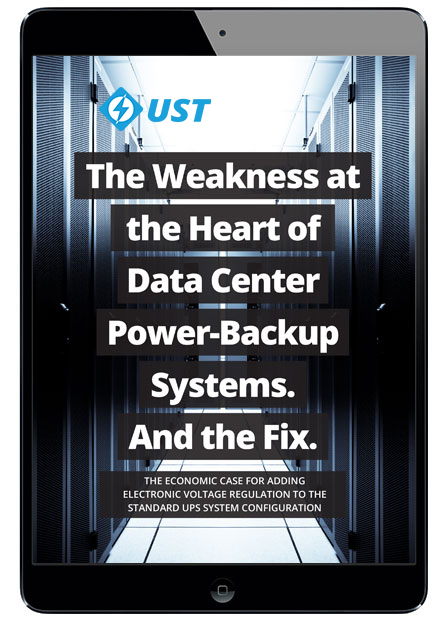 A UST WHITE PAPER
A UST WHITE PAPER
The economic case for adding electronic or automatic voltage regulators to the standard UPS system configuration.
Uninterruptible Power Supply (UPS) systems in data centers are designed to do double duty: supply backup power during blackouts, and monitor and condition power in the event of other voltage irregularities. This legacy design is electrically inefficient and costs the average data center more than $130,000 per year in unnecessary utility charges. ‘Green’ or ‘eco-mode’ options, despite promising significant cost savings, have been rejected by facility managers who believe it’s safer to stick to a standard configuration. Unfortunately, the standard configuration contains a basic design weakness that all but guarantees costly unplanned outages over the typical 10-year lifespan of an installation.
By separating the power-conditioning function from the power-backup function, an EVR-protected UPS system can achieve the electrical efficiency promised by manufacturers of eco-mode-enabled UPS systems and significantly reduce the risk of UPS-caused outages. Including electronic voltage regulators in backup-power and power-management system design can alter the risk formulas used to determine levels of redundancy required at UPS and data center levels.
This white paper examines the costs and the risks of the legacy UPS configuration. It also recommends consideration of an alternate system design that includes an electronic voltage regulator (EVR) as a standard component.

